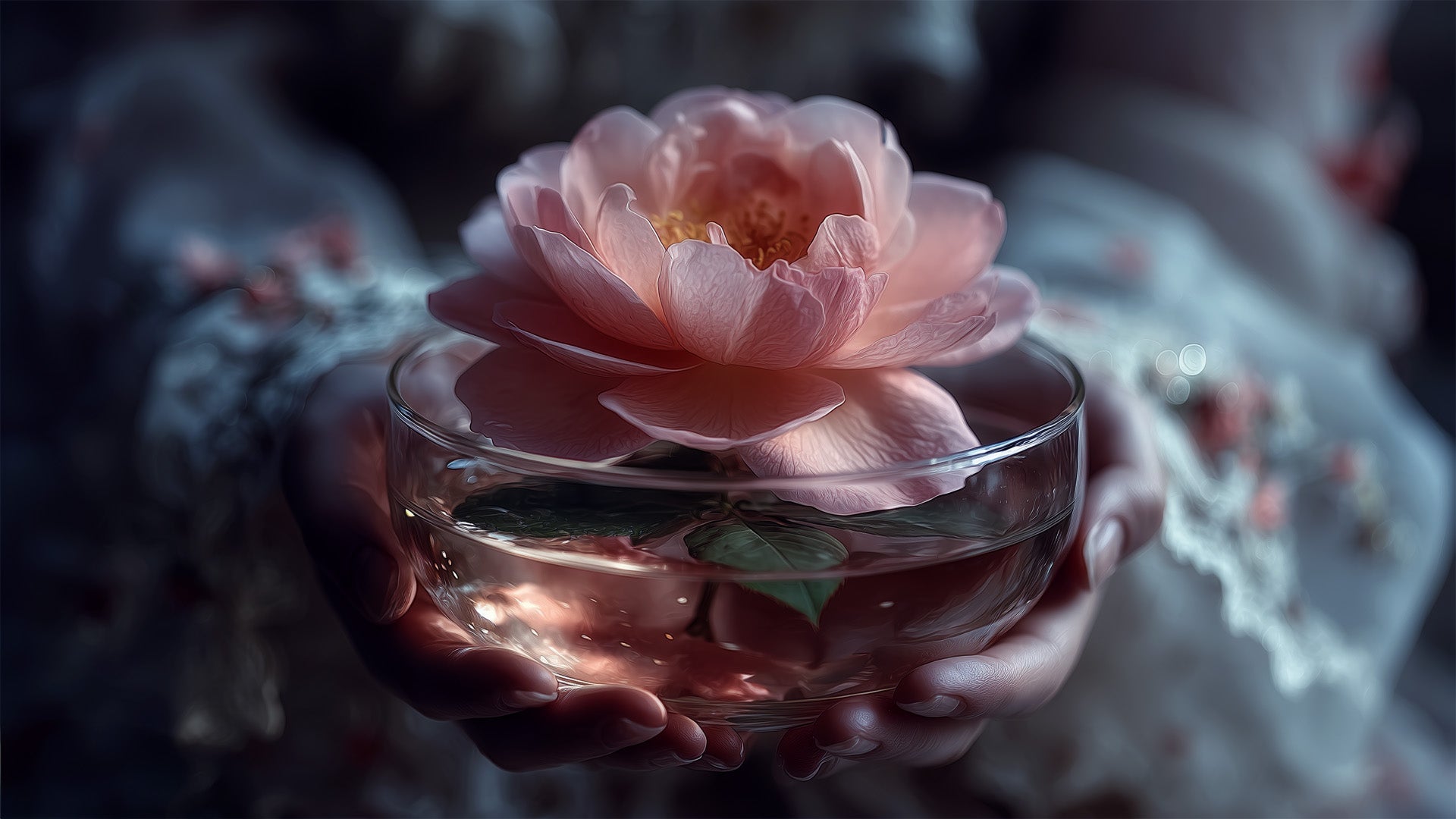
Rose Water vs. Rose Hydrosol: What’s the Difference?
For those exploring floral-based skincare or beauty routines, rose-infused liquids often come up as a point of curiosity. Among them, organic floral rose water and rose hydrosol might appear interchangeable at first glance.
Many people searching for usages of hydrosol or rose water for face as floral toners or facial mists may not realize that these two are not quite the same thing-even though they might be used in similar ways. This article talks about what exactly sets them apart.
Difference Between Rose Water and Rose Hydrosol
Various people experience differences in many aspects such as aroma, purity, uses, the overall profile of the product and others. Here are more details on the potential differences:
1. Origin of Each
Rose water might be made in several different ways. In so many commercial products this can mean mixing Rose essential oil with distilled water. This could possibly produce an oil with a more intense scent, depending on the quantity of oil you use.
In more traditional formulas, the rose petals are soaked (or just simmered) in water, and the properties of the flower are gradually extracted into the liquid. For these reasons, rose water can taste quite different from brand to brand or batch to batch. Some rose water may include added ingredients, whereas others are more stripped down.
Rose hydrosol is produced through steam distillation. As the rose petals are steamed, vapour would be produced, and this vapour would be collected and condensed to liquid." This hydrosol could potentially have trace amounts of essential oil, may have an aroma. As with the rose petals, it may have a gentle remainder of delicate qualities thanks to distillation. Some of you who are looking for a less fussy product may find hydrosols more appealing.
2. Texture and Fragrance
Most people exploring rose water notice that its fragrance is often stronger. Since it's often made with essential oil, it may carry a richer, bolder scent. This could be appealing for those who enjoy stronger floral notes in their mists, toners, or DIY blends. However, those sensitive to scent might find it a bit intense.
Hydrosol often has a gentler aroma, which might be ideal for individuals looking for a more delicate, airy option. Various people say it often feels lighter on the skin. This might be sometimes preferred by people who are particular about the weight and feel of their skincare products.

3. Potential Uses and Benefits People Explore
People often explore the uses and benefits of rose water and hydrosol in different ways. These may involve the following:
- Facial Mist and Toner: You may find use of both hydrosol and rose water in cream blends, face mists or toners. People may use them either on their own or layered under other skincare steps. Some people spray them after cleansing as a refreshing middle step, while others might use them to prep skin before applying creams or serums.
There's no strict rule here-people may choose based on personal preference. Those who prefer a bolder scent might opt for rose water, while others who enjoy a subtler experience might reach for rose hydrosol.
-
Hair and Scalp Sprays: Various individuals explore rose-infused sprays as light hair mists or scalp spritzes. Some might add them to their morning grooming routines, while others might enjoy a midday spritz to refresh their hair. Since rose water may have a stronger fragrance, it might linger longer. Meanwhile, hydrosol might offer a barely-there scent that doesn't compete with other fragrances.
- Makeup Finishing Mist: Some people lightly mist their face after makeup application to set their look or reduce powdery residue. Again, both rose water and hydrosol are sometimes might be used for this, though preferences vary. Those looking for minimal interference with makeup ingredients might lean toward hydrosol.
4. Packaging and Shelf Life
To maintain shelf stability, rose water may include preservatives or stabilizers, especially if it's made from infused water or contains essential oil. These ingredients might extend its shelf life, which many individuals might find appealing who don't use the product daily. That said, people concerned with added ingredients may want to read labels carefully when selecting rose water products.
Rose hydrosol is often sold with fewer preservatives or none at all, depending on the brand. As a result, it may need to be stored in a cool, dark place or even refrigerated to preserve its freshness. Various individuals who use hydrosols often may finish the bottle before any spoilage occurs.
5. Affordability and Accessibility
Due to its broader production methods and potentially lower cost of production, rose water might be easier to find in supermarkets, beauty stores, and online shops. It's often sold in large bottles at affordable prices. This accessibility makes it a popular choice for people exploring floral waters for the first time.
Because hydrosol is often steam-distilled and may require a more specialized process, it might be priced slightly higher or sold in smaller quantities. Many people looking for artisan-style floral mists or products without essential oil additives may prefer hydrosols.
Conclusion
Though they may look similar on a shelf, rose water and rose hydrosol might offer slightly different experiences. Their method of creation, fragrance intensity, texture, and shelf stability may all contribute to how they perform in various routines. While rose water might be the go-to for scent-focused users, hydrosol may appeal to those who value minimalism and distillation-based purity.
Ultimately, most people choose based on what they value most. You might find one suits your needs perfectly, or you may keep both on hand for different uses. Whatever your choice, the appeal of rose-based mists remains timeless for many who enjoy floral beauty routines. If you want to give this floral water a try, you may explore the broad collection available at HBNO.